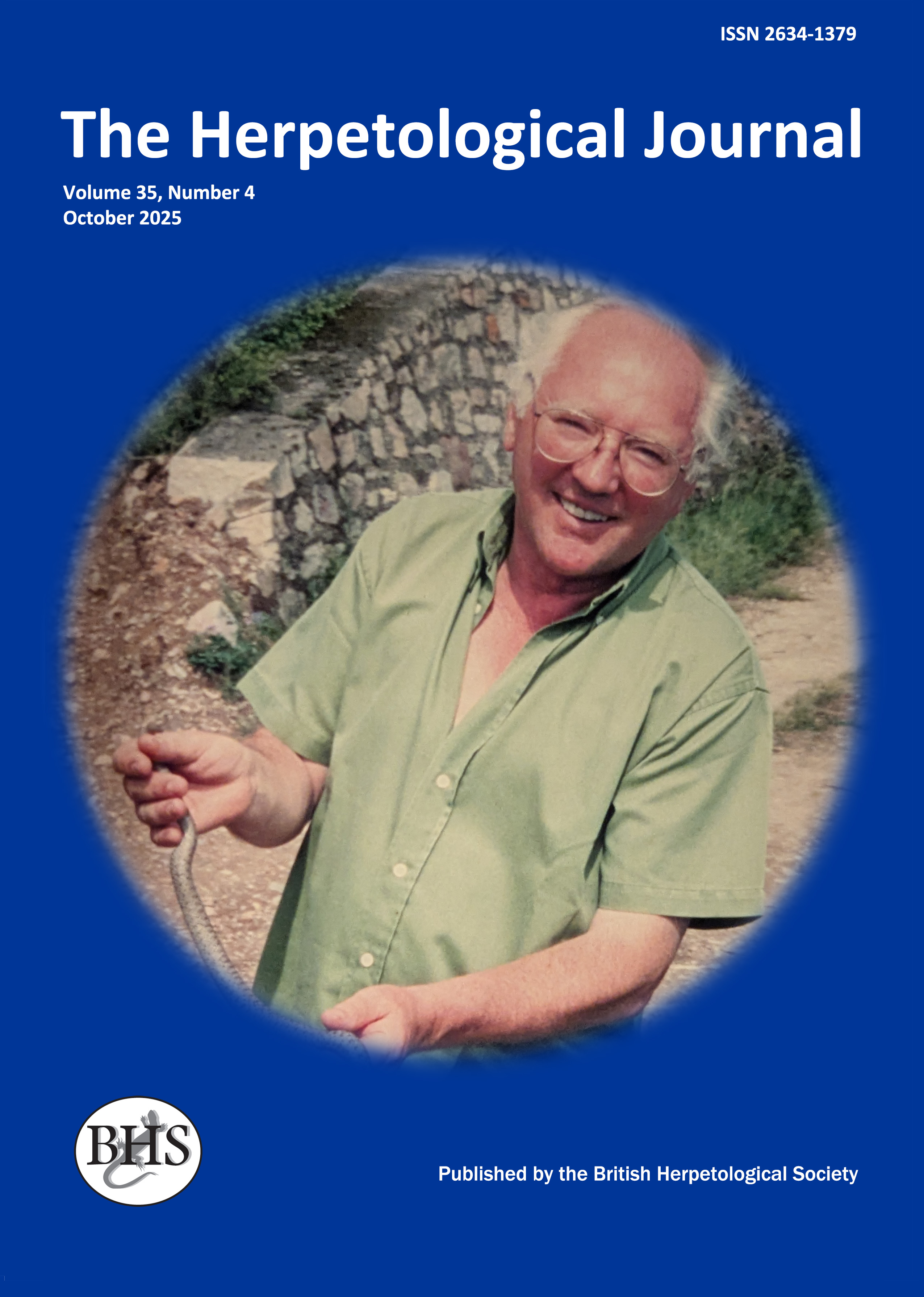
The Herpetological Journal
The Herpetological Journal is the Society's prestigious quarterly scientific journal. Articles are listed in Biological Abstracts, Current Awareness in Biological Sciences,Current Contents, Science Citation Index, and Zoological Record.
ISSN 0268-0130
2023 Impact Factor for the Herpetological Journal is 1.1, with the Journal sitting just below Quartile 2 in Zoology, at percentile 46.9
pdf 12. A brief insight into the microbial infection in chelonian eggs and perspective of cloacal-oviductal fluids as antimicrobial agent
5 downloads
Subscription / purchase required
DOI: https://doi.org/10.33256/35.4.341349
pp. 341-349
Authors: Swarup Ranjan Mohanty, Soumya Sephalika Swain, Bhabani Sankar Mohapatra, Sudeep Kumar Behera, Shubhransu Nayak & Satyaranjan Behera
Abstract: Chelonians belong to the class Reptilia and include turtles, tortoises and terrapins which primarily inhabit freshwater, brackish, coastal and terrestrial ecosystems. More than 50% of the 364 known living species of turtles and tortoises are under the Threatened category which are facing a perilous situation. They encounter various pathogenic and non-pathogenic bacteria and fungi in the sand and soil of nesting habitats while laying their eggs. In comparison to the non-nesting beaches, sea turtle nesting beaches possess significantly higher nutrient loads and microbial abundance. This higher microbial load is becoming an imperceptible threat to the survival rate of sea turtle embryos on the nesting beaches. However, like other reptiles and faunal groups, turtles also secrete cloacal fluids or oviductal fluids while laying eggs which possess antimicrobial properties to various pathogenic bacteria and fungi. The cloacal fluid contains both simple glycoproteins and Antimicrobial Peptides (AMPs), which play a role in antimicrobial defense. AMPs have been isolated from other fauna where a good number of research has been carried out on protein molecular biology for their application in the pharma industry for therapeutic uses. Though sporadic and preliminary investigations have been carried out on the antimicrobial nature of cloacal fluids, no in-depth insight is available regarding their mechanism of action, the biochemical and molecular engineering of these simple glycoproteins, and their potential pharmaceutical applications. Further, the studies have been mostly restricted to a few species and few provinces only. Hence, lots of research gaps need to be addressed on this aspect of turtle conservation. The Convention on Biological Diversity envisaged International Governments to conserve biodiversity with people’s participation along with the flow of benefit sharing to the conserver of bioresources. The current review was carried out to bring insight into the antimicrobial nature of cloacal-oviductal fluids and their potential for chelonian conservation.
Keywords: cloacal-oviductal fluid, antimicrobial peptide, turtle, chelonian, pathogen

